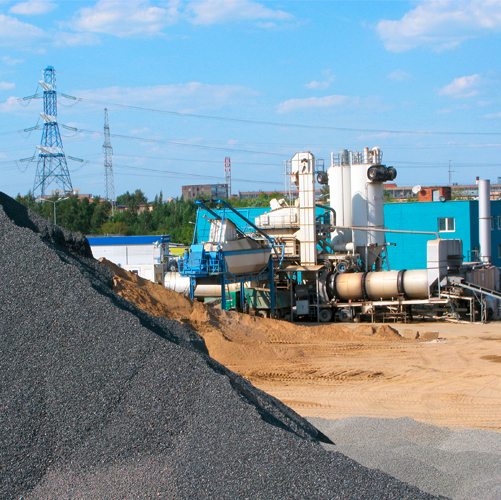In property management, energy expenses are the line item with the greatest potential for reducing costs. Recommissioning a building’s mechanical system is a relatively simple way to lower the energy bill by 10-15% while increasing the comfort of occupants via an investment that has a payback period of only a few years.
But what are the winning conditions for ensuring the success of a recommissioning project? Which buildings are the best candidates? And which measures to implement to maximize the efficiency of such a project? That is what we propose to discover in this article.

Example of operating and property management expenses
Recommissioning in brief
Let me say, first, that the recommissioning of buildings, known as RCx, is a structured approach aimed at ensuring that a building’s systems are functioning optimally in order to meet the actual needs of the occupants. It is a low-cost approach since it does not involve replacing existing systems or adding new ones; instead, it optimizes the functioning of existing systems with a view to improving the comfort of occupants and achieving energy savings. The payback period for an investment in such projects is usually less than three years.
Prerequisites for the success of an RCx project
The success of a recommissioning project depends on a certain number of conditions, beginning with the participation of top management (those responsible for operating expenses) in the project, as well as a clear definition of the roles and responsibilities of everyone at the outset.
Call on a professional
It is also important to call on an accredited RCx agent from the start of the process of selecting and prioritizing buildings. The manager and his team need to discuss with the RCx agent their strategy for developing the buildings selected for the next five years. For his part, the RCx agent must be informed of the property management group’s financial strategy so he can propose only measures for which the payback period corresponds to the project’s cost-effectiveness criteria.
Get buy-in from the team
The RCx agent also plays a leading role in mobilizing the building operations team. He needs to present and explain the project to team members, taking their point of view and their reality into account, consulting with them to create a sense of belonging. The Ops team will be more inclined to collaborate and to pay special attention to the systems once the measures have been implemented. The team will thus develop optimization reflexes and will naturally turn to the agent in the event of any electro-mechanical problems.
Provide detailed and complete documentation
The building owner also needs to provide those concerned with all the documentation about the building (plans and specs., operating sequences from the building automation system (BAS), inspection reports, ops and maintenance manuals, energy bills for the last three years, etc.). Detailed, up-to-date documentation means less work for the RCx agent, which will help reduce the cost of carrying out the project.
Centralize controls
Before starting the project, it is preferable to integrate the control of any stand-alone systems with the centralized control system. Having adequate switchboxes, such as VAV boxes, is also necessary. And the floor needs to be able to communicate with the central mechanical rooms.
Do not overlook small buildings
Finally, small buildings should not be systematically excluded from recommissioning projects. In such cases, a shorter approach can be undertaken that will help achieve better cost-effectiveness.
Characteristics of a good candidate for recommissioning
With the help of good pre-selection tools, in particular, a study based on an effort/gain matrix and an analysis of the leases, the property portfolio manager and his team, along with the RCx agent, need to target which buildings will be the best candidates for recommissioning their mechanical systems. As part of this process, several criteria need to be taken into consideration, including:
- Building equipped with a centralized control system (CCS) with regulation by zone.
- High energy intensity compared with other similar buildings. A comparative analysis (benchmarking) using the Energy Star Portfolio Manager, or data from Natural Resources Canada’s building energy use surveys, can be a good starting point to know where the building ranks in terms of energy consumption.
- Problems with arguments over heating, leading to service calls related to the comfort of the occupants.
- Electro-mechanical equipment in good condition. In the case of-end-of-life equipment, it is better to replace such equipment before starting an RCx project.
- Occupation rate representative of the reality of the building (do not start an RCx project if the building has a low occupation rate since that could distort the results.)
Cost-effective recommissioning measures for commercial buildings
Once the buildings have been selected, the project team can choose the most efficient and most cost-effective measures based on occupation and current uses, for example:
- Nighttime setback (adjust temperature set points during unoccupied periods).
- Adjust flow rate of switchboxes:
- During the design, flow rates are often based on the load representing the worst-case scenario, but the actual load is usually lower when occupation is taken into account;
- Maintain minimal flow rate required at the heating coil.
- Adjust operating hours based on occupation and leases.
- Improve temperature curves on the ventilation system.
- Adjust pressures on the ventilation system.
- Improve control sequence on the hot water loop.
- Install sequences to encourage off-peak heating, if possible.
- Control fresh air: adjust the flow of fresh air, based on the occupation rate in the various zones of the building.
- Promote natural cooling (free cooling) when possible.
- Adjust/calibrate temperature, humidity, etc. sensors and replace any that are defective.
- Repair valves.
- Control lighting.
- Clean dirty heat exchangers.
Ensure transfer, monitoring, and persistence
Being content with simply implementing corrective measures is not enough to achieve a project’s full savings potential, and so could not be considered an RCx project. By definition, a recommissioning project is an approach that includes continuous monitoring for at least two consecutive years. Monitoring the performance and persistence of the measures implemented is essential for an RCx project to achieve its full potential.
Energy monitoring
An RCx project must include an energy monitoring tool to oversee the building in real time: heating and cooling trend curves, electrical power, set points, pressure points, etc. The centralized control systems facilitate collecting and visualizing these data in the form of graphs and tables, compiling a multitude of complex algorithms and generating reports to better analyze the data. Programmable alarms can also warn of certain problems. However, too many alarms can complicate management of the systems to the point where there is a risk of the operator overlooking them. And so it is best to focus on alarms linked to significant changes.
Automation
It is also much easier today to automate collecting bills from different energy suppliers to compare them and to draw a parallel with the monitoring curves on how the system is functioning. Investing in archiving is a good practice for keeping a history of the data. Even better, the accounting system can be linked to the energy information system platform to automate the billing process and so save time and reduce errors.
Continuous monitoring
Monitoring helps understand the dominant energy loads in a building, and it helps the Ops team be more proactive in planning interventions. In fact, managers have several free, and easy-to-use tools such as the Energy Portfolio Manager. Also, the adoption of regulations on the disclosure and rating of GHG emissions, such as those of the city of Montreal, is accelerating the deployment of these tools. In short, a continuous monitoring system is indispensable today in reducing energy costs and carbon emissions from buildings.
Advantages of recommissioning mechanical systems
Beyond energy savings, the recommissioning of mechanical systems offers significant advantages that may have sustainable repercussions on operational characteristics, on value, and on the carbon footprint of a building. It also helps in:
- Reducing operating costs.
- Preventing the early wear and tear of equipment (extending their lifespan). RCx assures the optimal use of equipment by reducing, for example, stop/start cycles, hours of operation, etc., and thus slows down their depreciation.
- Reducing greenhouse gas emissions (GHGs).
- Automating partially relieves operators from continuous monitoring, reduces the time for diagnoses, and allows them to concentrate on value-added tasks.
- Providing documentation at the end of an RCx project helps the Ops teams better structure their work and facilitates the diagnosis of any potential mechanical problems.
- Improving the thermal comfort of occupants, as well as the quality of the indoor air.
- Enhancing the value of the buildings. Recommissioning facilitates obtaining certifications such as BOMA Best and LEED.
- Upgrading the buildings and thus attracting and retaining tenants who sign long-term leases.
In summary: A long-term, cost-effective project
A recommissioning of mechanical systems project generates savings of 10-15% on average, and the payback period is usually less than three years. This kind of project is particularly appropriate for aging buildings and/or for “energy guzzlers” so long as a methodical approach is adopted, founded on an informed pre-selection of buildings that offer the best effort-gain ratio. To sustain the advantages of a recommissioning, it is also important to continuously monitor the measures adopted to ensure their efficiency over the long term. This will guarantee the viability of the project in terms of energy consumption, the comfort of occupants, and the reduction of GHGs.
|
Grants are available to make recommissioning projects even more cost-effective. Consult Recommissioning, under Énergir’s Energy audit and implementation.
|
Feriel Acher, Eng., CMVP, CEM
Advisor, Energy Efficiency
DATECH Group
Masculine pronouns (he, his) have been used throughout to simplify the text. No gender bias is intended.
Continue reading








